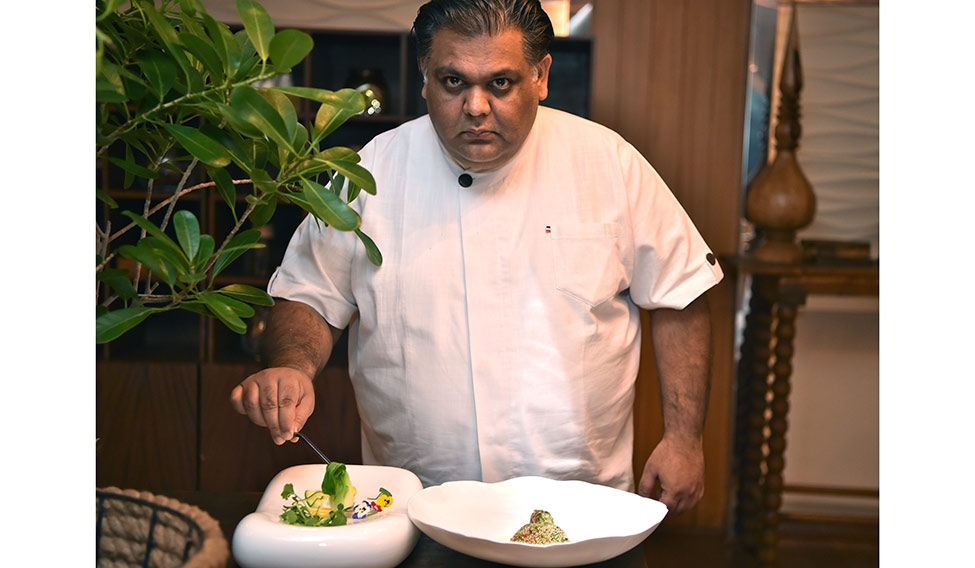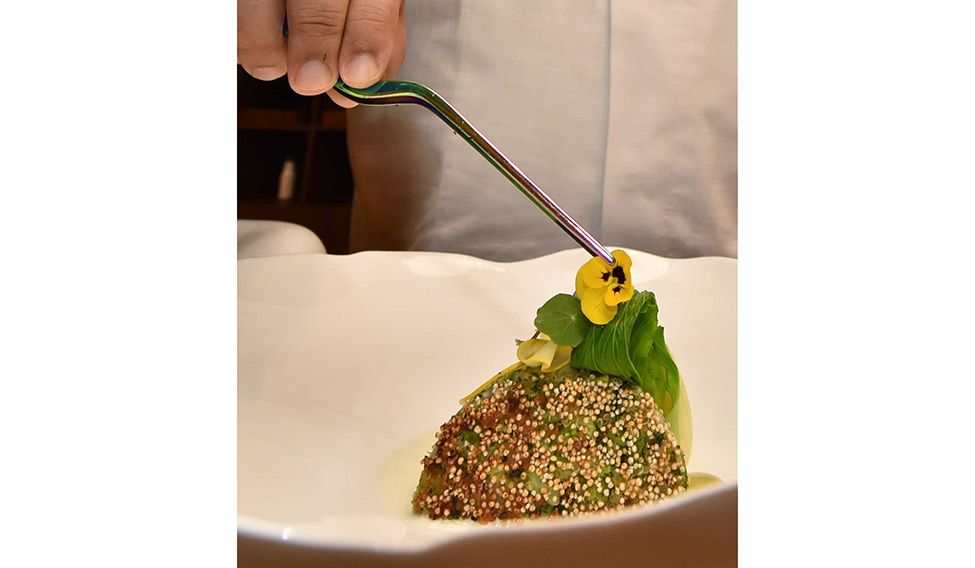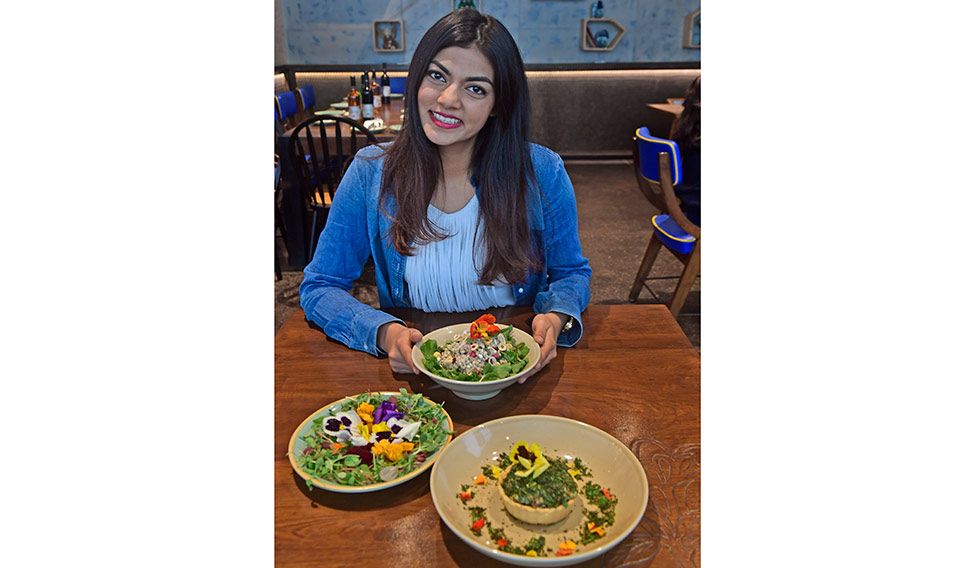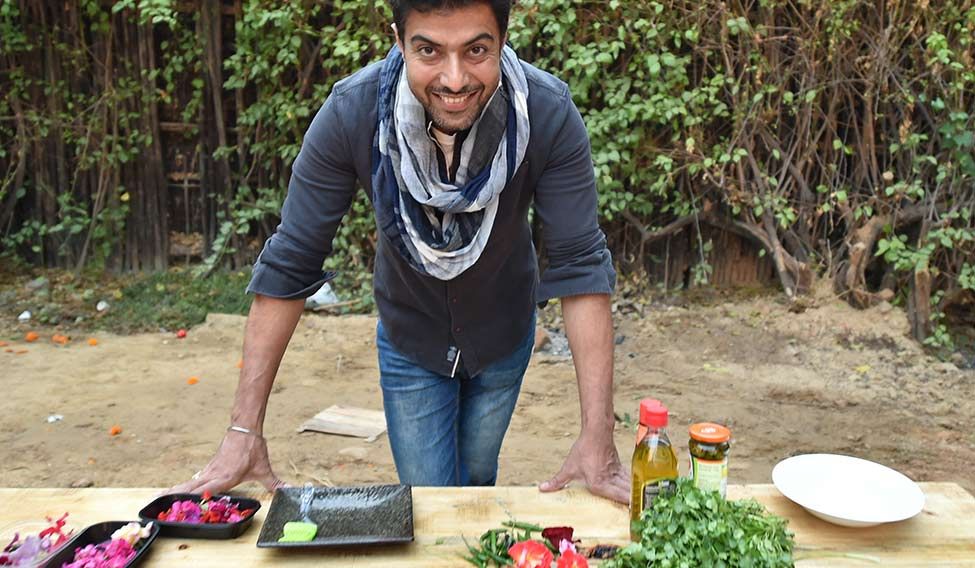
Restaurateur Shraddha Bhansali likes to say it with flowers. The 25-year-old owner of Candy and Green, which was launched in Mumbai last February, is always thinking of new ways to incorporate flowers in her recipes, be it cakes, beverages or salads. Her favourites are the blue pea flower, also known as aparajita or shankhapushpam, and the bright orange nasturtiums. Apart from being loaded with nutrients, both these flowers add drama to the food with their colours. She, therefore, doesn’t go for artificial flavours and colours.
Going natural has been the mantra in the food world for quite some time, and chefs have now moved beyond the greens, and are increasingly using a range of flowers in their preparations. Flowers are not new to the plate. In many forms, they are routinely consumed, whether as vegetables (cauliflower and banana inflorescence) or as colouring and flavouring agents (rose, saffron, jasmine) and even as spices (cloves are dried buds).
Now, however, flowers are serving multiple purposes, especially in the show cuisine department. Take the blue pea flower. It is commonly available in Indian gardens, but few of us are aware of the magic it can create. Stir a concentrate of these flowers into an acidic drink like lemonade and watch it turn purple. Just imagine what it can do to your cocktail!
Bhansali has used these flowers to prepare purple rice and to play around with the dull green tea. Nasturtiums go into her cake crumble tart, adding colour and boosting the dish with iron and Vitamin C. The spicy smell of basil and oregano flowers and the comforting fragrance of lavender bring colour and flavour to her salads. Who needs fancy molecular gastronomy to dress up the plate!
Ajay Anand, culinary director at Pullman in New Delhi’s Aerocity, is another flower fan. “Many know that pomegranate flowers are rich in Vitamin C and D. Flowers of citric fruits are rich in Vitamin C,” he says. “Sometimes, we use these in place of the fruits. So, in our version of the traditional khakhra-khandvi, we use dried and powdered lemon flowers as garnish.”
The focus on flower in food is a western trend, says celebrity chef Ranveer Brar. India, he explains, has had a great tradition of flower-based cooking, which is being revived under this new wave. A chef in Australia made a golden-coloured vinegar with marigold flowers, which is a rage now. But, Brar notes that the original rose jam—gulkand—has been around for 700 years. Then there is also a very old recipe of gulmohar ghosht from Rajasthan.
Harangad Singh, brand chef at Prankster, a fusion restaurant in Gurugram, was impressed by the Instagram posts of Danish chef René Redzepi, who owns the eatery Noma and is majorly into experimenting with flowers in food. Singh, too, strews petals of jasmine, pansy, geranium and cilantro over his dishes.
While most chefs like having their own garden patches for fresh harvest, flowers need not necessarily be used in the fresh form. “I infuse jasmine in oil, and use the oil to flavour biryani and pulao,” says Singh. Coriander is a regular garnish in Indian dishes; its flowers, more often known as cilantro blossoms, have a herbal flavour and make excellent garnishes, he says. With elderflower in cocktails and pansies on the jalebi platter, Singh indeed knows how to serve a bouquet. At Bengaluru’s Farzi Cafe, chef Sombir Chaudary uses dianthus flowers in rasmalai and malai johar chaat. Modern plating focuses not just on food but also presentation, and this is where flowers score over artificial decorations on the plate, says Singh.
Though presentation matters, pairing flowers is not a random exercise and chefs need to do their homework. Dhruv Oberoi, head chef, Olive Bar and Kitchen, New Delhi, says people are not bold enough when it comes to plating. “Though we have used flowers in cooking in the past, people are yet to experiment it with presentation,” he says. “There are dos and don’ts that are required before pairing them with dishes. Maybe that is why it is not widely used.”
Oberoi has been serving flowers, taking inspiration from the forest and garden. This has helped him reinvent dishes as well. At Olive, he serves green velvet cake by adding moringa (drumstick) flowers as a colourant. He also likes using the blossoms of vegetables that have been used in the dish. For instance, onion blossoms as crispies with an onion and chicken salad or grilled squash flowers as accompaniment to a squash preparation.
If you are a novice, then how do you start adding flowers to food? For starters, remember which flowers are edible and which are not, says Oberoi. Lilies and daffodils are out—they have toxins. So is the lantana flower—don’t succumb to the prettiness of the little florets. It is dangerous to add new ingredients without knowing what chemicals they are loaded with. So never pluck flowers randomly from the roadside or even from the backyard garden without first ensuring that they are safe. The blooms supplied by florists are also no-nos on the plate—they may have been heavily sprayed. Sourcing flowers from a supplier who will give edible grade varieties is the best bet.
So when you have learnt to say it with flowers, serve an edible bouquet.

















